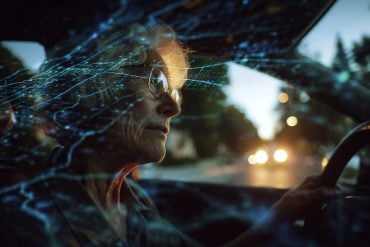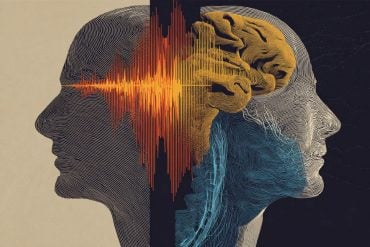Summary: Individuals who physically feel others’ pain, known as mirror-pain synaesthetes, are more likely to help. Using fMRI, they observed that these individuals activate their secondary somatosensory cortex more, linking empathy to prosocial behavior.
This study highlights the importance of empathy in motivating generosity and offers insights into enhancing prosocial behavior. Findings could inform future interventions to boost empathy.
Key Facts:
- Mirror-pain synaesthetes are more generous due to higher empathy levels.
- fMRI scans show increased activity in the secondary somatosensory cortex.
- Empathy can be modulated and influences prosocial behavior.
Source: KNAW
Using a unique setup, researchers from the Social Brain Lab at the Netherlands Institute for Neuroscience have researched the neural mechanism behind a universal dilemma: deciding whether to help someone else even when it involves a personal sacrifice.
We often have opportunities to give up something we care about to help others. What brain mechanisms help us make those decisions, and why do some people help more than others?

Over the years, philosophers and scientists have suggested that the extent to which a person empathizes with the distress of others influences their willingness to help.
To explore this hypothesis experimentally, Kalliopi Ioumpa and Selene Gallo, under the supervision of Christian Keysers and Valeria Gazzola, investigated pro-social behaviour—voluntary behaviour intended to benefit others—in self-reported mirror-pain synaesthetes.
Mirror-pain synaesthetes report feeling pain on their own body whenever they’re witnessing pain on someone else. If sharing the pain of others is indeed a key motivator to help others, these individuals should be particularly generous.
“To better understand why some people help more than others, in the past, our lab had performed experiments with participants that are at the lower extreme of empathy, including individuals with psychopathy.
“This time, we wanted to look at the opposite extreme: people that feel the pain of others so much more, that it feels like the pain is on their own body” explained Christian Keysers.
“In the literature, there was some notion that these participants feel such a localized pain when witnessing that of others, because their brain activated somatosensory cortices – regions normally only involved in the sense of touch on your own body. Would that influence their donations?”.
The conflict scenario
Studying a realistic conflict in a controlled lab-setting requires a creative approach in which participants feel that their decisions have real consequences both for themselves and for someone else.
“If you just ask people whether they are generous or not, most of them like to say yes” Christian says with a smile.
“To reveal real differences between people, you have to create a situation in which the distress of others feels real, and where helping has a real cost for participants” Valeria emphasizes.
In their study, they created such a conflict by making participants believe that they were participating in the study together with another participant. In reality, the other participant was an actor, which kept each experiment consistent.
In the experiment the two ‘participants’ were allocated two different roles: one, the actor, who was filmed while receiving painful stimulations on their hand; the other, the participant, who received real money and could donate some of this money to alleviate some of the other participant’s pain.
“All participants believed that the other was really receiving the painful stimulation on their hand in ways that depended on their donations” Kalliopi Ioumpa explains.
“In reality we pre-recorded the actor receiving these painful stimulations ahead of time, so that all participants saw the exact same stimuli”.
Because participants made their decisions in the fMRI scanner, the researchers could analyse the brain areas related to their decisions, and how they differed between those that feel pain on their own body when they see the pain of others, and those that do not.
Kalliopi Ioumpa: “We wanted to explore how much different participants would help and what the underlying neural mechanisms would be.”
Mirror-pain synaesthetes and prosocial behaviour
Compared to control participants, the self-reported mirror-pain synaesthetes donated significantly more money to alleviate the other participant’s pain – giving credence to the belief that the more you feel the pain of others, the more you are willing to give up to help them.
As expected, the researchers also found significant differences between the two groups when looking at the brain mechanism “self-reported mirror pain synaesthetes activated their secondary somatosensory cortex more. This brain area is involved in sensory experiences such as touch or pain”, Kalliopi Ioumpa explains.
“So while most of us just feel generally uncomfortable when we see others in pain, mirror touch synaesthetes have a higher activation in their somatosensory cortex, as if they are experiencing pain in the corresponding body parts themselves, and they are more motivated to help” adds Christian.
Towards more prosocial behaviour
After each experiment, participants are told the truth about the other participant being an actor, and they receive the amount of money they chose to keep.
Kalliopi Ioumpa: “We know that someone’s level of empathy can change. People can learn to enhance it but also to shut it down. Consider doctors for example, they tend to become less empathetic over the years because they need to block their empathy”.
Valeria Gazzola: “and as I explain in my TEDx talk, we can all modulate how empathic we want to be in a particular situation. Empathy is not a fixed trait, it’s something we have control over, and that, as we show here, can influence how prosocial we decide to be”.
“This study helps us understand prosocial behaviour better as well, as its links to empathy. We show that a group of highly empathic individuals, that somatically feels the pain of others, also demonstrates enhanced pro-social behaviour”, Kalliopi Ioumpa explains.
The researchers hope that their work can inspire interventions to enhance empathy and prosocial behaviour in the future.
About this empathy and neuroscience research news
Author: Eline Feenstra
Source: KNAW
Contact: Eline Feenstra – KNAW
Image: The image is credited to Neuroscience News
Original Research: Open access.
“Neural mechanisms of costly helping in the general population and mirror-pain synesthetes” by Kalliopi Ioumpa et al. Scientific Reports
Abstract
Neural mechanisms of costly helping in the general population and mirror-pain synesthetes
It has been argued that experiencing the pain of others motivates helping. Here, we investigate the contribution of somatic feelings while witnessing the pain of others onto costly helping decisions, by contrasting the choices and brain activity of participants that report feeling somatic feelings (self-reported mirror-pain synesthetes) against those that do not.
Participants in fMRI witnessed a confederate receiving pain stimulations whose intensity they could reduce by donating money.
The pain intensity could be inferred either from the facial expressions of the confederate in pain (Face condition) or from the kinematics of the pain-receiving hand (Hand condition).
Our results show that self-reported mirror-pain synesthetes increase their donation more steeply, as the intensity of the observed pain increases, and their somatosensory brain activity (SII and the adjacent IPL) was more tightly associated with donation in the Hand condition.
For all participants, activation in insula, SII, TPJ, pSTS, amygdala and MCC correlated with the trial by trial donation made in the Face condition, while SI and MTG activation was correlated with the donation in the Hand condition.
These results further inform us about the role of somatic feelings while witnessing the pain of others in situations of costly helping.






